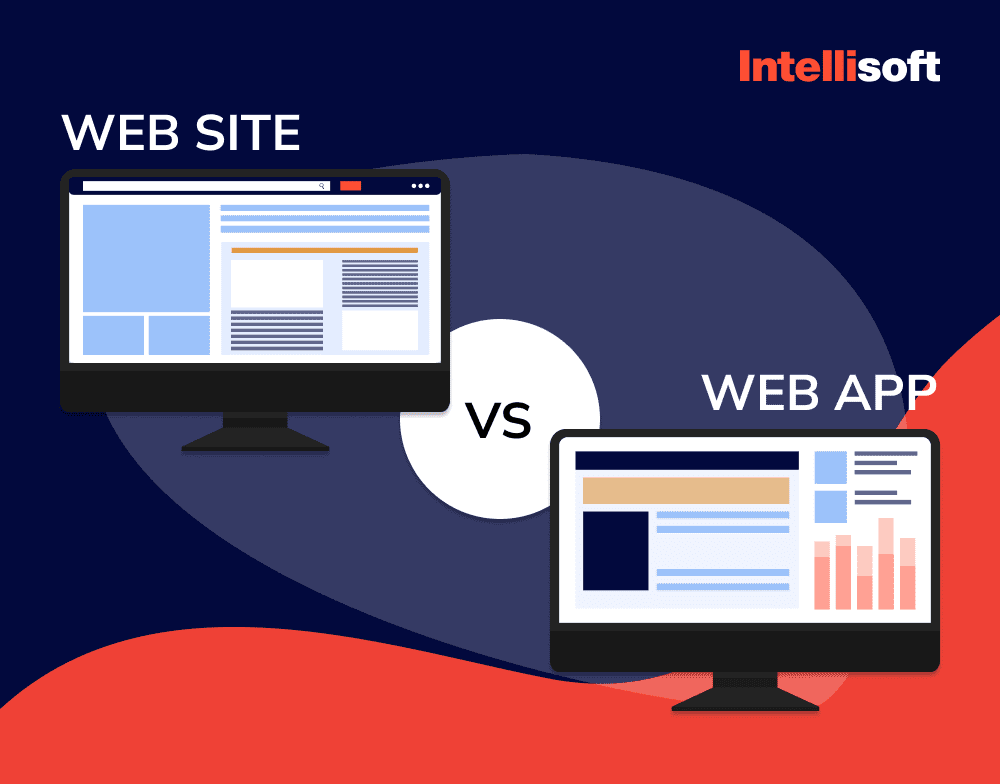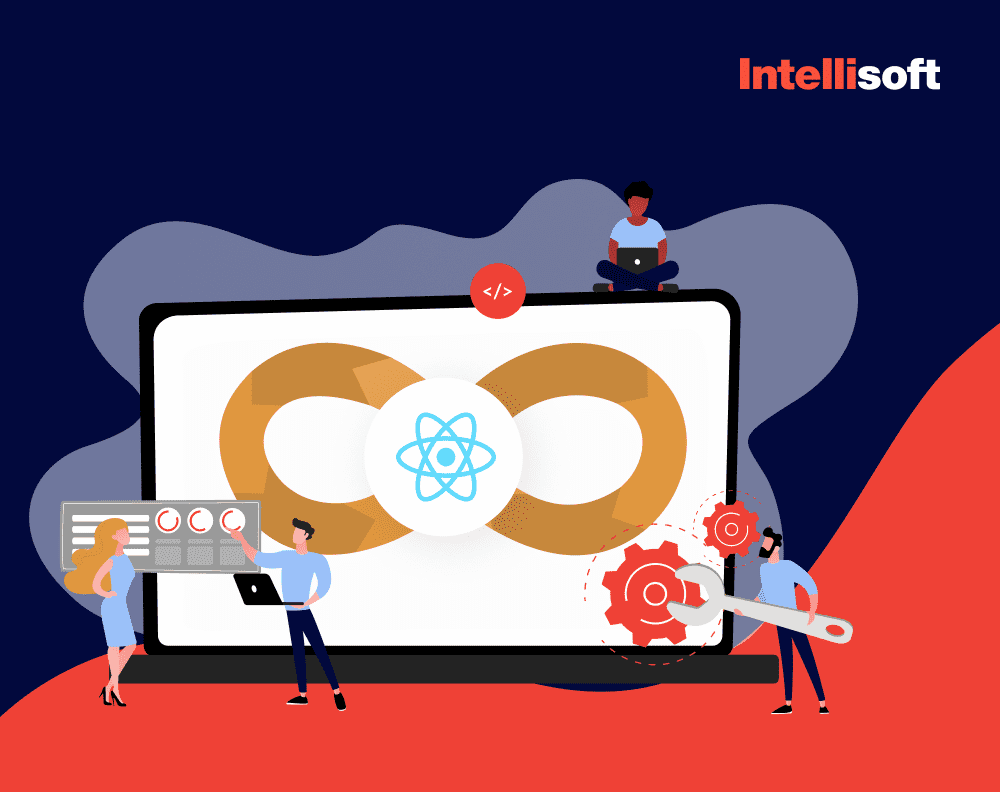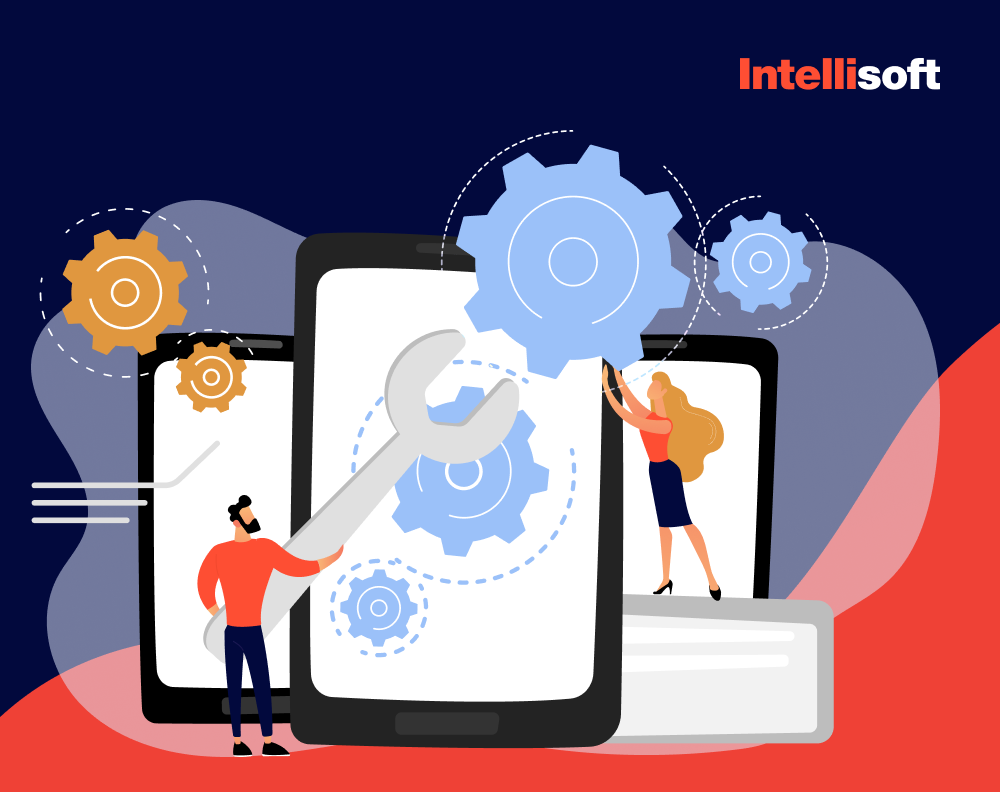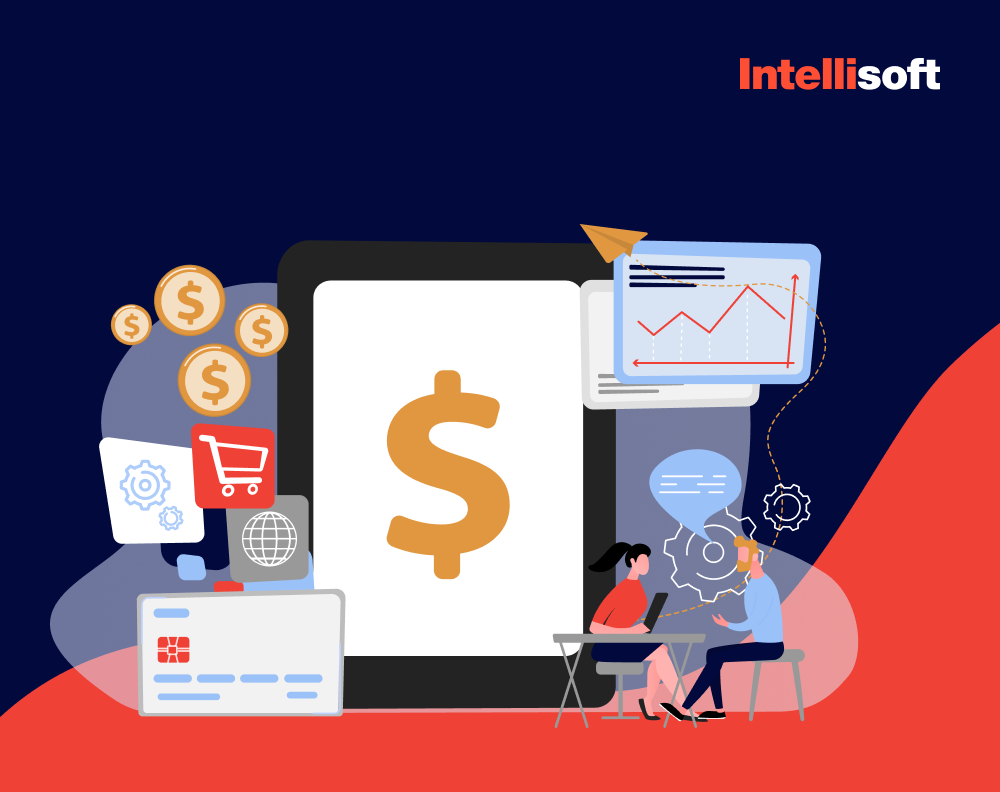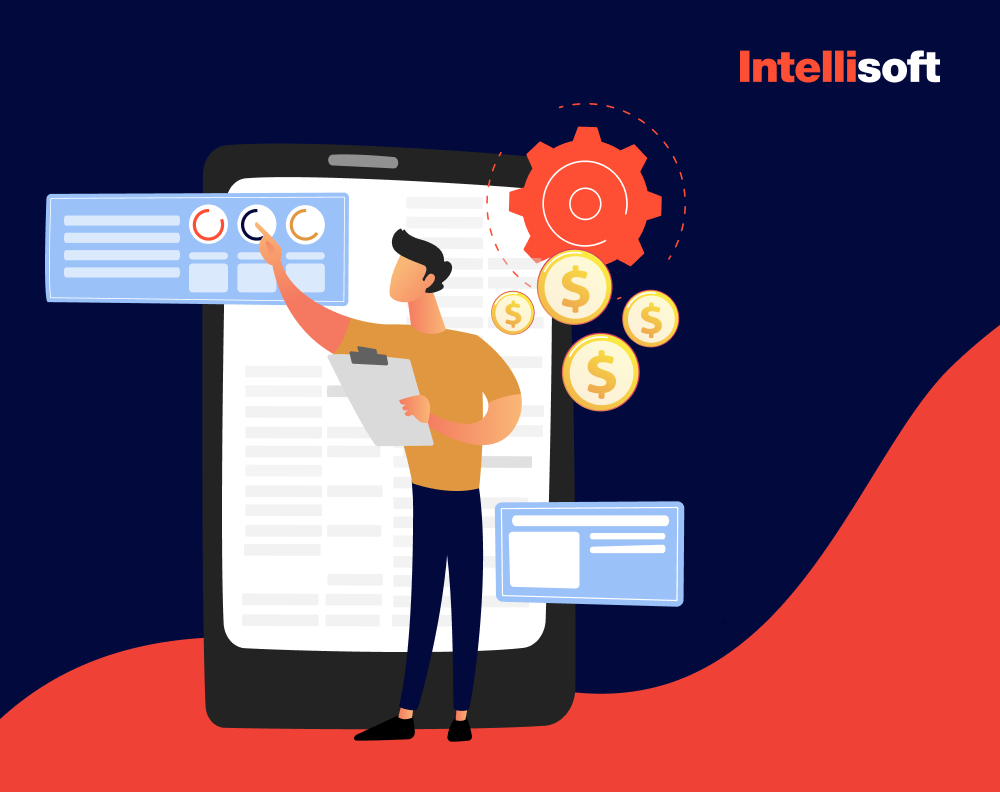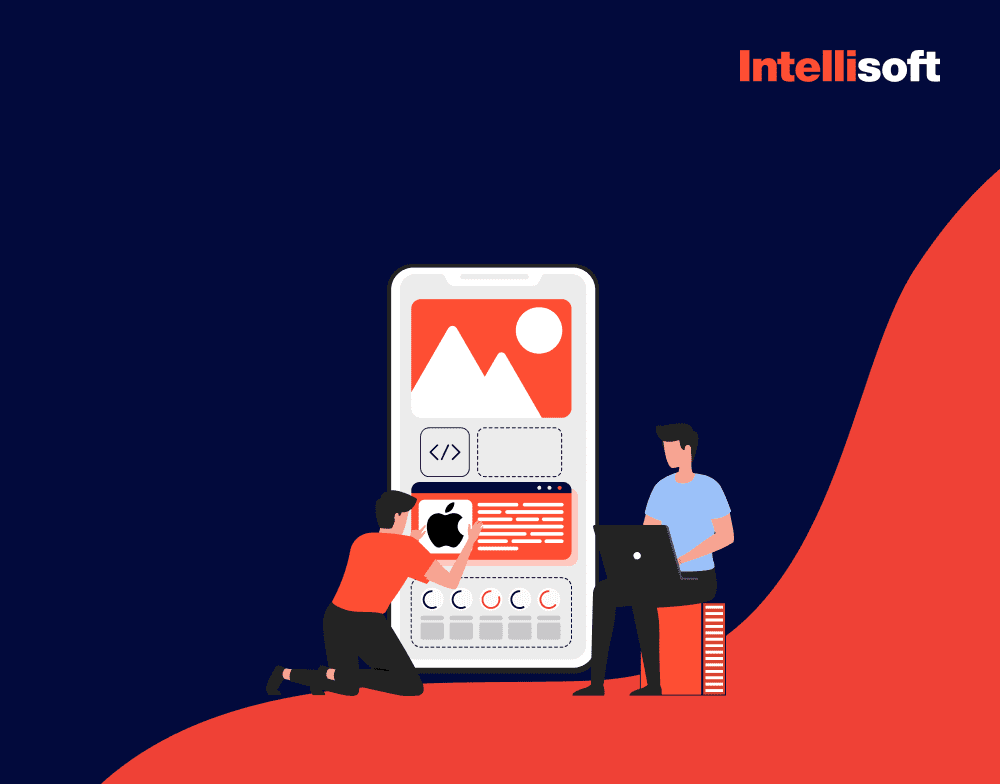Our reliance on screens such as mobile phones, tablets, laptops, and PCs has become indispensable. According to Hitwise reports, nearly 60% of online searches are conducted on mobile devices, with the remaining searches divided between tablets and desktops.
The global number of iOS users has surpassed 1 billion, and this figure is projected to grow substantially, as indicated by data from AppMySite. The soaring demand and dedicated customer base have contributed to this remarkable growth. With these trends, it’s clear that iOS is emerging as a significant game-changer. Let’s dive into the details of each iOS programming language without delay.
What iOS Programming Language is All About
iOS programming languages are primarily employed in developing operating systems for Apple, Inc. products. This approach means that all devices created and supported by Apple are built using iOS programming. To put it simply, iOS programming involves creating, designing, testing, and deploying applications on the iOS platform for devices such as iPhones, iPads, iWatch, and more.
Among the various iOS programming languages, Swift shines as the most advanced and efficient one for iOS app development. However, this doesn’t undermine the importance and effectiveness of other languages in this field. For instance, Objective-C still holds its ground, especially in managing legacy codebases or ongoing iOS projects.
The ability to leverage both languages in a way that enhances productivity is a significant advantage for users. This dual-language proficiency opens up a world of possibilities in iOS app development.
By now, you should have gained an initial understanding of the iOS Programming Language. In the upcoming sections, we will gradually shift our focus to the core of this topic by unveiling the benefits of integrating advanced techniques in iOS app development.
Table of Contents
Benefits of iOS Programming Languages for Businesses
Smart business owners will choose the app development language for their iPad or iPhone based not only on their current requirements for building the app but also on their expectations for the app’s potential in the future. This decision is also beneficial to the company in some respects. Before deciding, let’s review some of the most critical factors you must consider.
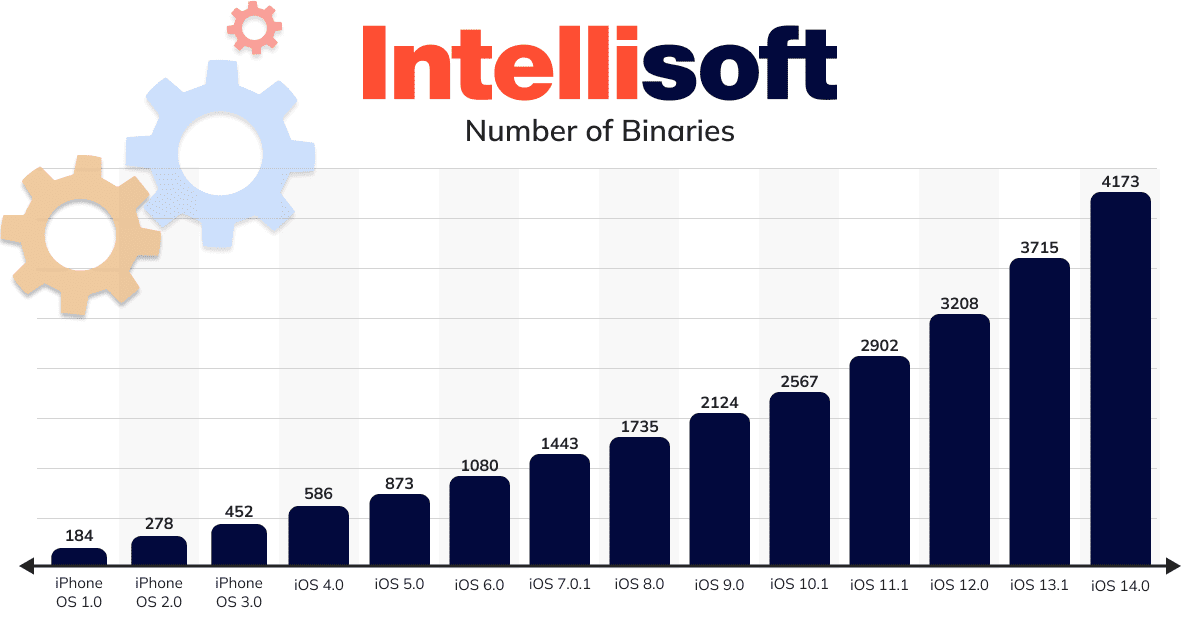
Native Functionality & Performance
Swift is a good choice if your organization makes only iOS apps or needs to employ cutting-edge native capabilities. Swift lets you design highly performant iOS apps that meet users’ visual and user experience standards. The most considerable benefit is delivering high-quality platform goods that leave people wanting more.
Other choices can provide a native-like user experience, but the native development platform offers the best performance and access to new features.
Web Availability
Companions for mobile apps, such as web apps, are very popular. Choose a solution that users can access on the web if you have plans to expand into the realm of web applications. Web technologies are a tried-and-true choice, but more recent frameworks like React Native and Flutter may also be beneficial in certain circumstances.
People will likely continue using apps that work in all circumstances they demand, increasing user retention. Creating apps for online usage makes them available everywhere, which makes them more desirable to users who frequently switch between devices on which they can use the app. Developing apps for the web also makes it easier for developers to reach a wider audience.
Project Diversity & Developer Flexibility
If your business plans to work on more than iOS apps, consider choosing a multi-purpose iOS programming language that enables the developers to branch out and take responsibility for other projects at the organization. This step can make developers more adaptable and able to take on a broader range of tasks, providing them with fresh opportunities to flourish in various circumstances.
Cross-Platform Development
Use a hybrid iPhone app development framework such as Xamarin, React Native, or Flutter if you are creating an application to run on many mobile operating systems. Having the opportunity to target platforms other than iOS carries some benefits, but expanding your user base is by far the most crucial of these benefits. The number of people who use an app is the most critical factor in determining its success or failure.
Types of iOS Mobile Apps
There is a wide variety of apps available for mobile devices. The development of these apps must begin with a selection from one of the top app categories: native, cross-platform, progressive web apps (PWA), or hybrid. Because every app category has advantages and disadvantages, choosing the one that will serve you best might be challenging.
Native Apps
Users can download native applications from the AppStore explicitly designed for a platform and use the device’s OS memory. This type of mobile device has the benefit of being optimized for just one operating system, making the devices functional and quick enough.
The development of native applications for iOS takes place using native writing languages for these platforms so they seamlessly fit into any device. Once installed on the gadget, the service has access to most phone services: camera, microphone, calendar, photo, and video files, as well as other services. After installation, the user can enable push notifications by accessing the device’s notification system.
Pros:
- Performance and high speed
- Complex mathematical calculations are possible
- Attractive, advanced interface
- Both Internet and offline mode
- The smooth running of games
- Support by a particular operating system
Cons:
- Coverage of only one platform
- Labor-intensive creation
- Time-consuming
- Relatively expensive
Cross-platform
You must grasp the concept of cross-platform applications and what it means for a program to work on multiple platforms. The argument is that the executable cannot be launched in another OS because it was compiled for a specific mobile platform. That is to say, even if a cross-platform solution was created and produced for Android, you still cannot transfer the *.apk file to your iPad and launch it.
The point of cross-platform solutions is not to make things easier for users but to speed up the process of making a mobile app. So, a cross-platform application is a solution built to make it easy to compile the source code to run on multiple mobile platforms. However, each compilation will result in a different executable file. For iOS, for example, the executable file ends in *.ipa.
Pros:
- Reduced development time and cost
- Acceptability of the same interface and UX
- A universal code base
- Coverage of a broad user audience
Cons:
- Lower performance and reliability
- Possible difficulties with app marketplaces
- Relatively low flexibility
PWA Apps
Progressive Web App (PWA) is a technology for building websites that lets an app run in a web browser. The way the page looks and works is a lot like an Android native app. Developers can use a direct link to get to the PWA app, and users can put its icon on a phone, tablet, or any other desktop device. Engineers use the secure HTTPS protocol to send data.
PWA apps are better than native apps because the system downloads updates as soon as the page loads. There’s no need to download them again. Another benefit is downloading the app from the store or a browser. This advantage lets you get around the rule that you can’t install apps from unknown sources.
Pros:
- Progressive enhancement: improves the speed and dependability of any online application
- All clients are automatically using the most recent version
- Low friction – no need to install the app before using
- Simple to share and locate
Cons:
- Still a young technology; not all browsers support it yet
- Less access to hardware
- Less performance for computation-intensive applications
Related readings:
- 20 Main Trends in the Development of Mobile Applications in 2023
- From Idea to Prototype: Build a Mobile App from Scratch
- How to Build an iOS App for Your Start-up in 2023
Hybrid Apps
iOS applications development has progressed to a new stage, characterized by hybrid applications. There are three main categories of mobile applications: hybrid, native, and cross-platform. To finally understand what the term “hybrid application” means, it is vital to examine these applications briefly.
A hybrid application combines multiple programming languages. The application may act as a cross-platform application, but it employs “native code” for certain system functions.
Many experts claim that developers can come up with this application using cross-platform JavaScript, but only when a particular system feature—such as Face ID—is required do they create a Swift plug-in and integrate it into the application.
By creating a relevant plug-in for the system that enables users to save the data to the phone memory, the hybrid application can also function without access to the Internet.
Pros:
- Cost efficiency
- Lower demand for maintenance & support
- Reduced development time
- Scalability
Cons:
- Limited functionality and user experience
- Lower performance
- Browser requirements and other issues
9 Best iOS App Development Programming Languages
The most valuable tools for developing iOS apps show up in the following list. You can find both iOS-specific and general-purpose programming languages and cross-platform frameworks.
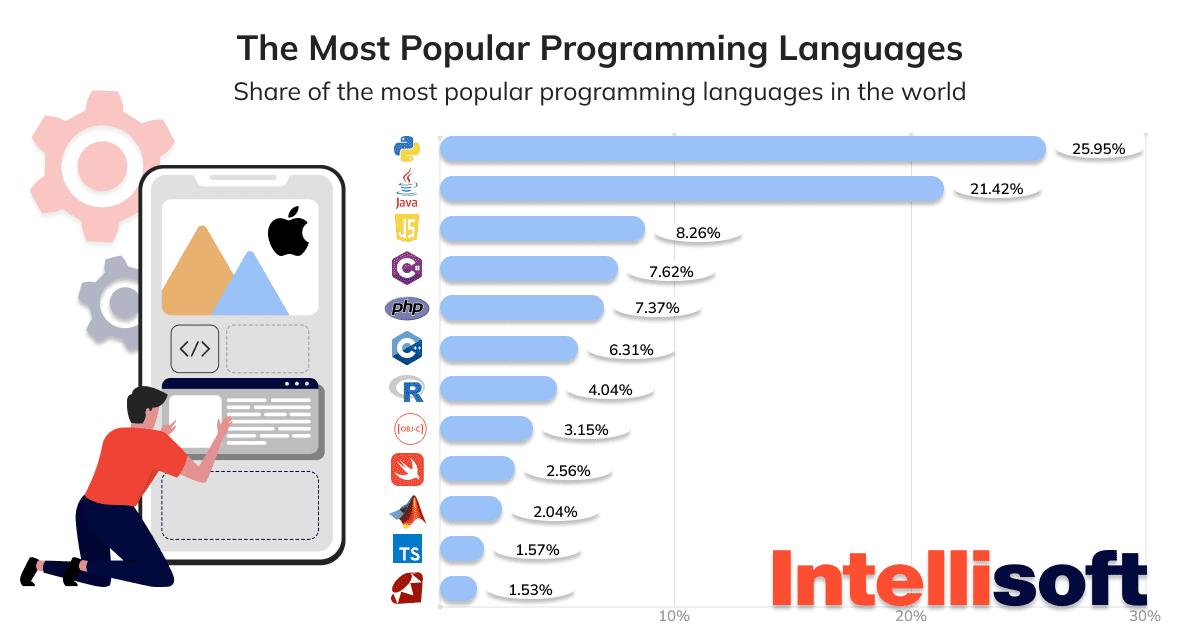
Objective C
Objective C entered the arena in the 1980s. It was based on C and Smalltalk, and in 2008, Apple released the iPhone SDK 2.0, which allows you to create programs for iOS. At first, it was an add-on to C, but when NextStep and Apple licensed it, Objective C became the official language of all iOS interfaces.
A lot of documentation is available to make working with Objective C simple. Although compatible with Swift, it performs worse than this iOS programming language.
In 2014, the more powerful Swift came out, which took the best of Objective C but was stripped of its shortcomings. Most programmers choose Swift, but developers still use Objective C to support legacy projects.
Swift
Since its release, Swift has become one of the best languages for app development, in particular creating iOS, iPadOS, macOS, WatchOS, and itvOS. Apple introduced it in 2014 as a replacement for Objective C, and iOS developers have been actively using Swift since then. According to the PYPL (programming language popularity) index, Swift for app development is the 8th most popular programming language in the world and has a market share of about 2.03%.
Working with Swift for app development is much cleaner and safer than with others. This iOS app programming language provides astounding performance for most tasks. If you are working on a project, security is the biggest concern, and, keeping this in mind, Swift cannot be “nil” by default, and its compiler will stop using “nil” and prevent unwanted crashes of your application.
Developers mainly use Swift for app development for Apple devices. There are almost no other applications for the language, with very few exceptions. This gap limits its popularity.
BuildFire Software Development Kit (SDK)
BuildFire is a progressive mobile app builder. Provides a large number of settings and modules. Also, this kit allows programmers to create custom functionality. Supports integration with a large number of third-party services.
BuildFire is a middle ground between coding and template solutions. Both have disadvantages. iOS development by traditional methods is expensive, and for many companies, it is an unaffordable financial burden that also takes up a lot of time. Template designers do not always lend themselves to customization – they often resemble each other, and implementing the desired feature in them is often challenging.
BuildFire has a lot of functionality now, but you can add much more to it to make your apps do whatever you want. If you want to create something genuinely innovative, use the BuildFire SDK. It’s a convenient way to keep your app up-to-date with the latest enhancements.
C#
C# is currently the eighth most popular programming language on the planet and is utilized by 31.4% of all software developers everywhere. High-level and object-oriented developers can use C# for various projects. Microsoft developed it as a competitor to the popular Java programming language. The The.NET framework and runtime environment are closely tied to the C# programming language.
C# (C sharp) is as simple as C and C++ but has additional functionality. Unlike C and C++, which can run in different compilers, C# uses Visual Studio IDE. Visual Studio is an easy-to-use IDE (integrated development environment) with many libraries, which adds to C# advantages in learning for beginners.
C# is a widely used iOS game programming language. Engineers use it in developing web applications, video games, and Windows programs.
Flutter
Developers have a chance to choose an iOS app programming language that is very fast and suitable for the modern digital age. Yes, Flutter offers fast operation and instant reloading, allowing the user to view all the latest changes without losing relevant data. Those who want to get into iOS app development can explore a comprehensive app development kit, also known as the SDK, which was introduced by Google in 2015 and released in 2017.
Flutter’s flexible user interface makes even the most complex implementations accessible to users on various devices, turning this into an excellent programming language for Android and iOS. In addition, Flutter provides a library of pre-built widgets that may be used in any iOS app. Developers’ efforts could be more minimal because of this function.
React Native
It is standard practice to use React Native while creating iOS apps. Because it is so simple to learn, it has become the language of choice for budding iPhone app developers. It’s available on Meta, which also boasts a big following. Also, your app can be made available for Android devices.
React Native uses well-known Javascript and Typescript. Developers with experience with these languages will have little trouble transitioning to React Native. This programming language for iOS allows you to create stunning applications for the iOS platform.
Everything in React Native is reusable because everything in this iOS app programming language is a component.
HTML5
Hypertext Markup Language (HTML5) accounts for about 89% of websites. Today, small startups use this language because it is not time-consuming and is a very economical toolkit.
HTML5 is the latest standard for browsers to display and interact with web pages. Approved in 2014, it’s the first update for HTML in 14 years. That’s a lifetime between updates.
The goal of HTML5 is primarily to make it easier for web developers and browser builders to comply with consensus-based standards that improve efficiency and empowerment. HTML5 provides a better, faster, and more user-friendly interface for desktop and mobile users.
Although developers use HTML widely, it may not be the best choice because it doesn’t work well with older browsers and doesn’t support building custom apps. Because of this, custom design is less flexible and has less functionality.
Python
Python is a versatile modern high-level language, the advantages of which include the high performance of software solutions and structured, well-readable code. Programmers can use it to write applications as well as develop web services. Python’s syntax is as light as possible, allowing you to learn it relatively quickly. The kernel has a very convenient structure, and a comprehensive list of built-in libraries enables you to use an impressive set of useful functions and features.
Python can support various application development styles, including being comfortable with OOP and functional programming.
One of the most popular language interpreters is CPython, written in C. This development environment is distributed free of charge under a free license. The interpreter supports the most popular platforms.
JavaScript
JavaScript is one of the most popular programming languages for iOS worldwide. Java is a strictly typed object-oriented programming language for iOS developed by Sun Microsystems (later acquired by Oracle). Developers use it to create interactive web pages, mobile applications, and server-side development.
In the context of mobile applications, programmers use JavaScript in React Native, a cross-platform open-source framework for developing mobile and desktop applications.
Java is now the world’s sixth most popular programming language, with over 9 million programmers.
Tools for the iOS Programming Language
Upon beginning your education in the iOS programming language, you will find that the top two tools are an absolute must.
Xcode
Xcode is a modern, fast editor that allows you to create functional apps for iOS. It is free, developed by Apple, and users can download Xcode from the App Store.
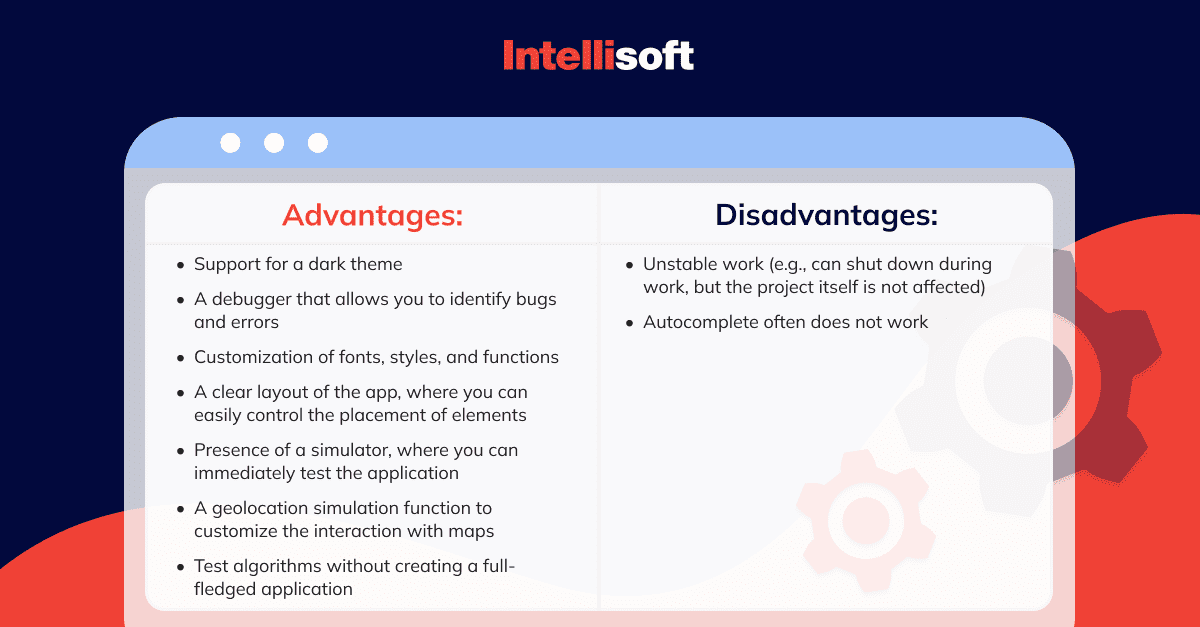
AppCode
AppCode is a popular app development environment for iOS. JetBrains invented it. This environment understands any programming language for iOS and contains many tools and features. The main feature is excellent compatibility with Xcode. In one environment, the application can quickly transfer to another.
Besides, you can consider several other tools for mastering iOS mobile app development.
Swift Playgrounds
Industry experts use Apple’s Swift programming language to create some of today’s most popular apps. This innovative app for iOS devices and Macs makes playing with and mastering Swift a breeze.
Like a puzzle game, Swift Playgrounds requires developers to enter and test code until they find the best answer. Qualified developers use Apple’s Swift programming language for iOS apps.
Mac OS X
The macOS operating system is present on every Mac. It enables you to carry out tasks impossible for other types of computers because Mac OS X functions appropriately with the hardware it employs and vice versa. The macOS operating system comes packaged with a vast library of applications, each expertly crafted.
SwiftFormat
SwiftFormat is a tool that can automatically format the code that you write. SwiftFormat can automatically adjust whitespace, add or delete implicit self, eliminate needless parentheses, and remove deviations from the standard Swift idioms.
iOS SDK
iOS SDK is the software development kit that Apple created to create mobile applications that run on the iOS operating system by Apple. We can use the programming languages Swift and Objective-C in the development process, thanks to the iOS Software Development Kit (SDK) and XCode. An iPhone simulator is also included in the SDK package.
iOS Simulator
A tool for developing and prototyping your mobile app is the Apple iOS Simulator, which is a part of Xcode. Although it can be used to test the essential functionality of your app, the iOS Simulator has many limitations as a testing environment.
You may build apps for iPhone on a virtual or physical device by establishing a project without designing the user interface or writing any code.
The simulator app on your Mac displays the user interface of the iPhone, iPad, or Apple Watch in a window.
How to Choose the Best Languages for App Development
When choosing a programming language for iOS apps for your project, you should consider several essential factors.
- Project requirements. Consider the features and project type you must implement. Specific languages, like JavaScript for front-end development and PHP for back-end development, are better suited for particular project types.
- Scalability. Think about how easily the language can be expanded. Some languages may not be suited for large-scale projects or require more resources to deal with substantial traffic.
- Functionality. The capabilities of various web development languages vary. For instance, specialists use JavaScript for front-end programming, while PHP is utilized for server-side scripting. Using the correct language guarantees that the final product will perform as expected and fulfill all of the project’s goals.
- Developer expertise. Think about the skill set of the people working on your development team. If your staff is already fluent in a specific language, continuing to use that language rather than learning a new one can be the more time- and resource-efficient option.
- Security. The language for constructing websites ought to have robust security features, guaranteeing that the website or application will be safe from attacks from the Internet. While developing a website, security is an essential component because it protects the user’s personal information and other sensitive data.
- Community support. Take into account the amount of community support and resources available for the language. Choose an Apple programming language that has a vibrant user community and extensive documentation to get the most out of your efforts to solve problems and hone your abilities.
- Availability of resources. If you’re building a website, it’s best to use a widely-supported language because it means more libraries, frameworks, and communities to tap into for help. In this way, any problems that may crop up during development can be quickly identified and fixed.
- Compatibility. The programming language for Android and iOS has to suit various additional technologies and platforms utilized in the project. Compatibility assures that a website or application will perform without any hitches or complications when used with other tools and technologies.
How to Find an Android Developer?
The most popular options for recruiting developers include freelance experts and outsourcing agencies. However, which one is better for you?
Freelance vs. Outsourcing Agency
Outsourcing agencies are better than freelancers because they can offer a broader range of services. They have access to a larger talent pool, can provide more experience and expertise, and can often take on more significant projects. On the other hand, freelancers usually focus on a particular niche.
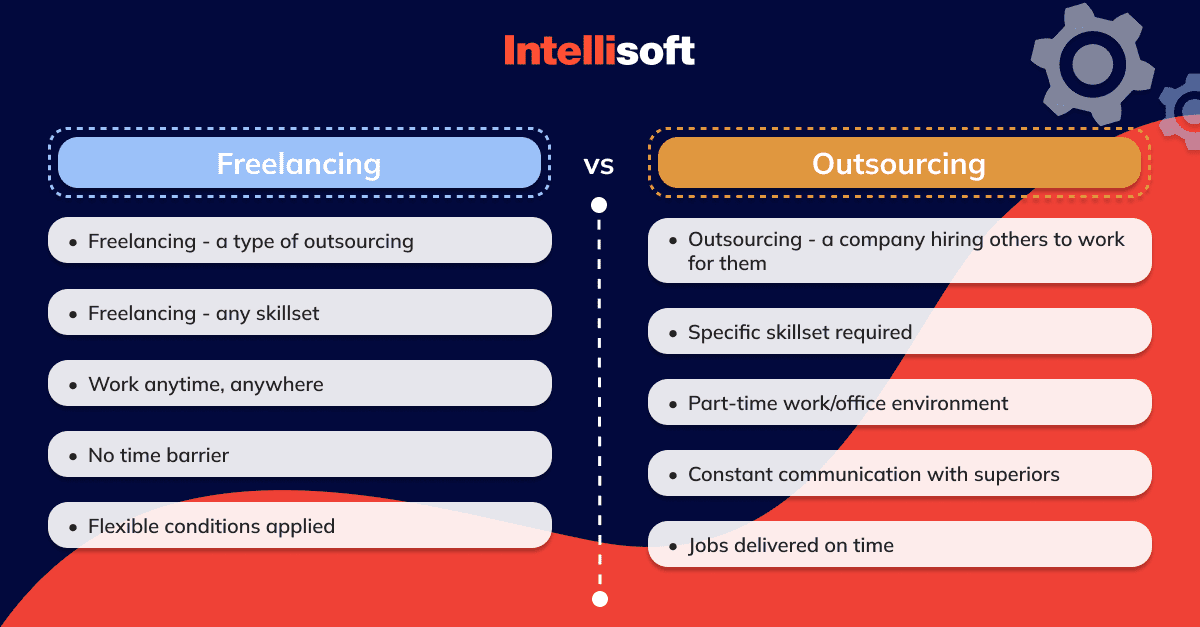
1. Freelancing
A freelancer is an independent professional who finds their work tasks on the freelance exchange and assigns payment. They do not work for someone on the staff. Their salary and workload depend only on them. A kind of “lone wolf” among specialists, who can choose an exciting project and take tasks in different directions, and if a freelance developer does not like it – refuse.
A freelancer is a single developer who can do small projects alone or join a development team. Working in a team imposes restrictions and turns freelancing into a hiring job without guarantees.
It is pretty challenging to imagine a freelancer entrusted with a complex project. At most, these are orders up to several thousand dollars. When the demand exceeds this amount, they are looking for a team of developers.
Pros:
- Less costly. Cost is a significant issue in any hiring choice. Freelance web developers are typically less expensive than salaried web developers.
- Less space. You don’t have to give a freelance web developer a workplace. Often, they work from home or a distance using the Internet.
- Flexibility. Because they can set their work hours, freelancing web developers have greater scheduling flexibility.
- Findable with little effort. You won’t have trouble locating a freelance web developer because of the numerous of them.
- Expertise. Freelance web developers frequently concentrate their efforts on one particular subfield of web development.
- Continuous communication. Freelance web developers are accessible 24/7 because they don’t need to report to a physical office.
Cons:
- Harder to control. Freelance web developers can be more challenging to manage because they are not permanent members of your company.
- Limited skillset. Frequently, freelance web developers cannot manage all facets of a project. They instead specialize in specific areas.
- Decreased availability of materials. Self-employment is the norm for freelance web developers. They have fewer options because they are a single individual.
- Unreliable communication. Since freelance web developers do not operate in a conventional office, they may not contact you during business hours.
- No post-project support provided. Freelance web designers and developers are no longer required to finish the project after the contract has ended.
2. Outsourcing agency
Global spending on outsourcing could hit $731 billion in 2023. An outsourcing agency is a company that makes money by completing projects for other companies that do not have their IT department or give a developer/team for rent. It is a contracting firm that sells custom IT services, implements a variety of products for clients according to specifications, and manages client projects limited by deadlines and budgets. To be stable, such companies must have many developers. Large companies have thousands of developers all over the world.
Pros:
- Flexibility in the working process
- Quality product
- Decreased time and costs
- A faster pace of work
- Best processes and practices
- Less stress and risk factors
- Various options for payment
Cons:
- Business threats
- The difference in time zones, languages, and cultures
- Lack of control over experts
- Confusing code
- Info security concerns
How to Develop an iOS Application
Let’s say you have already found specialists that mastered one of the languages to write a mobile app and decided to create your first independent project. What would a mobile app development plan look like?
1. Know your target audience
To get people interested in downloading your app, you must first learn more about them. Make sure you have a good understanding of the target persona. Understand the aims, behaviors, and preferences of your target audience and the platforms and mobile devices they use. Your software marketing may come in handy here. If you want your target audience to continue using the app, you must make it enticing. Define their buying habits, hobbies, age, gender, location, etc.
2. Conduct industry research
This stage includes an analysis of the market and existing products, interviews with stakeholders/investors, and user research. Before proceeding to the next step, describing the product’s business requirements (business goals, target audience, competitiveness, brand requirements, and success rates) is imperative.
Researching or employing customer segmentation to create a typical user profile based on demographics like country of origin, age range, sexual orientation, and so on is a valuable strategy.
3. Define the app’s scope
Before you begin, you should examine why you’ve decided to design an app and answer a few basic questions, such as:
- Why do I intend to develop this application?
- What will my product’s distinguishing characteristic be?
- What user requirements will your application fulfill?
- When you have the answers to these questions, not only will it be easier to communicate them to users, but you will also be able to decide on better strategies for future app development.
After establishing the application’s goal, you must determine the application’s various capabilities. For example, if you are developing a fitness application, you must decide which workouts to add. You may always increase the app’s scope in the future, but starting with a solid base on what it will cover is best.
4. Choose framework/tools/library
You must first set up your development environment to support your Android development objectives on your desktop. It is necessary to have Swift Playgrounds, iOS SDK, Xcode, or similar toolkits.
An integrated development environment is a system where you may enter your code and receive access to all the different tools needed for development. The technology used to create an app relies on its intended use. Programmers can build native apps using Objective-C, while React Native is better for cross-platform apps. You could also construct a PWA for your company to make significantly smaller, quicker-loading apps. Whether you want a native, hybrid, or cross-platform app, you should search for the best app for your phone.
5. Decide on features
Often mobile applications are born gradually – first, a demo version with simplified functionality enters the world, and then gradually, new features pop up in subsequent updates. This approach is most often financially justified. The developer collects user feedback and understands what to emphasize in further development. The developer can even make a minimum profit in the most favorable outcome.
At this stage of the mobile app development plan, the user experience map is determined. That is the basic features and functions available to the user and their interaction.
6. Evaluate your capacity to build an app
The time and money it takes to make an iOS app depend on how it works and how hard it is to make. It’s usually a job for a few specialists, like an iOS Developer, Frontend Developer, UX Designer, UI Designer, Graphic Designer, or even a QA Developer and Project Manager.
Also, this team should know much about the market and have experience making apps like this one. So, right from the start, you should decide if you want to use your in-house team or if you want to hire someone else to make your iOS app.
7. Plan your app design & security
It is the work of the designer and security experts. Start working with specific functionality and a clear understanding of the client’s steps at this stage. Create the information architecture (the basic structure of the navigation system):
- Prescribe the use case
- Connect system analytics
- Create prototypes and design interactions
It is essential to clarify that, at this stage, specialists work only with prototypes or simple layouts.
8. Develop your software
When developing a mobile app, constantly test and improve it, but sticking to the staged release plan is essential. This step is vital because customers frequently come up with new ideas for functionality and design while developing the app, which can significantly impact both the rate at which it is set and the plan for promoting it.
9. Release & publish the app
When experts finish the series of revisions, and all departments are satisfied with the result of the work, it is possible to release the application to the public. More accurately, you can upload the first demo version to the app stores to be downloaded by users. This procedure will take place once developers finish all of the work.
10. Post-maintenance & support
The previous step does not mark the conclusion of the effort to create the application. After that, it is essential to offer ongoing technical support for the system’s operation to enhance and expand its functionality.
Conclusion
When it comes to creating iOS applications, thorough preparation and consideration of key elements and principles are essential. In this blog post, we’ve taken an in-depth look at what iOS programming entails, the advantages of utilizing advanced techniques for iOS app development, the top 10 best programming languages for building native iOS apps, and important factors to keep in mind before choosing iOS application programming language.
As you begin your journey in iOS development, teaming up with IntelliSoft can offer invaluable expertise and assistance in bringing your ideas to fruition. The detailed information we’ve provided in this blog post has expanded your knowledge and understanding.



